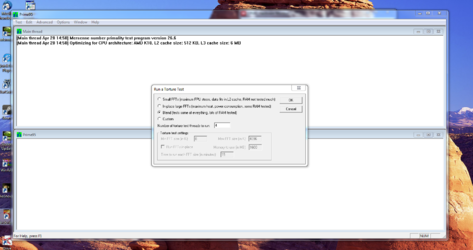- Joined
- Apr 13, 2012
- Location
- South East Ohio
I just got done putting a new X4 980 BE in my Asus M4A79T Deluxe mobo. I also installed an Hyper 212 Evo for cooling. I used AOD program to do the initial settings. I first tried 3.9 GHZ at stock voltage which is 1.437 volts. It ran at 42C running Prime95 for about an hour. So I upped to 20X which gives me 4.0 GHZ. It still ran at 42C with Prime95 but started locking up and wouldn't load Firefox. It did finally blue screen with something about a memory dump. It did this a few times so I raised the voltage to 1.475 at 20X. It has ran Prime95 now for over 2 hours without a glitch. This is with CPU-Z, Asus Probe, AOD and Firefox all running. The temp is steady around 51-52C. My memory is running at 1600 at 1.66V.
I have a few questions. Can I get to 4.1 or 4.2 GHZ? Is there any other changes I need to make? Any other settings needed changed or modified?
Any advice from the experts would be helpful. I'm not too familiar with all the settings in the BIOS on these new mobos. I'm used to OC the old Athlon XP CPUs where you basically upped the FSB or if you were lucky to get an unlocked CPU or a mobile processor and changed to multiplier and upped the voltage and got a stable unit.
I have a few questions. Can I get to 4.1 or 4.2 GHZ? Is there any other changes I need to make? Any other settings needed changed or modified?
Any advice from the experts would be helpful. I'm not too familiar with all the settings in the BIOS on these new mobos. I'm used to OC the old Athlon XP CPUs where you basically upped the FSB or if you were lucky to get an unlocked CPU or a mobile processor and changed to multiplier and upped the voltage and got a stable unit.
